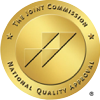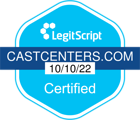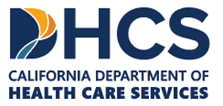Elijah’s life had become unmanageable. All he did was get high, alone in his apartment, and hide from the world. He knew that drugs and alcohol had become a problem. He just didn’t know what to do about it. In desperation, he had abruptly stopped drinking, taking pills, and using cocaine. But now he was miserable, irritable, and everything, and everybody was getting on his nerves. Elijah couldn’t understand why, now that he had stopped using the very things that were ruining his life, everything wasn’t just magically getting better.
Wasn’t Stopping Enough?
Elijah was what one could call a “dry drunk.” A term used to label an addict or alcoholic that’s abstinent; not actively using, but not sober and in recovery. This is also known as “white knuckling.” As in Elijah was hanging on for dear life, gripping the edge of sobriety and dangling over relapse, one drink or a drug away from falling back into the hopeless abyss of addiction.
If you look up the meaning of abstinence, it states, “restraining oneself from indulging in something.” And that’s all abstinence is—just not indulging. It’s not sobriety.
Meanwhile, Elijah was stuck in the same environment and mindset as when he was using drugs and alcohol. The only thing that had changed was he wasn’t numbing his feelings by getting high. All of his problems, resentments, fears, and obsessions that had always been there were still haunting him.
Oftentimes, you’ll hear a dry drunk lament that they didn’t get sober “to feel like this.” And that’s totally understandable. Making the decision not to drink or use drugs is the first step to actual recovery.
But Recovery isn’t Just Abstinence.
Recovery is healing mentally, physically, and emotionally from addiction and alcoholism. Recovery is being in action and putting in the work to decipher and uncover everything that’s been causing the addict/alcoholic to use in the first place. Abuse, trauma, neglect, untreated mental health, abandonment, failure, and the resulting low self-esteem, just to name a few, all play a role in why the majority of addicts and alcoholics use drugs. They just don’t want “to feel like this,” and when they stop using, all they do is “feel like this.”
The really insidious part is the constant thought in the back of their minds, “I know what I can use to stop feeling like this.”
Being in recovery is the process of addressing all those negative thoughts. Whether it’s through a 12 Step program (AA/NA, etc.), psychoeducational groups at an IOP, or a one-on-one therapy session, when the addict/alcoholic takes the initial steps to identify and change their detrimental thoughts, emotions, and behaviors, they begin their journey from abstinence into recovery.
The goal of recovery is to not only be substance-free but to enhance daily functioning and improve quality of life. Countless addicts and alcoholics have been “self-medicating” in response to their depression, trauma, anxiety, and PTSD. Their daily functions have been to use drugs, negatively affecting their quality of life. In recovery, addicts and alcoholics no longer avoid or “stuff” their feelings. They heal from them, move on, and become functioning members of society.
In recovery, the addict/alcoholic learns to let go of their self-centeredness. Life isn’t all about them, and everyone else is damned. In recovery one discovers spirituality, caring about those around you, even if you don’t know them. In recovery, the addict/alcoholic accepts responsibility for their actions and behaviors and makes amends when they have erred.
Recovery is so much more than not using.
It’s a new way of life.
Abstinence is none of that. Just stopping drinking and using is like acknowledging the top of the iceberg and ignoring the massive majority that’s submerged below. Using is a symptom of much deeper problems. If the addict/alcoholic is not in recovery, then those problems don’t just go away. They fester and grow, and inevitably, the pain they cause will become too much for the addict/alcoholic to bear.
Relapse Is The Inevitable Conclusion.
In the end, Elijah finally checked himself into an outpatient program (IOP). He went to group therapy and had weekly individual sessions with a therapist. He saw a doctor and psychiatrist. He was prescribed antidepressants and medication-assisted treatment for his craving. When he wasn’t at the IOP, he attended 12-step meetings. He asked another addict to be his sponsor, worked the steps, and only associated with other sober people who were doing the same.
With his therapist, he started addressing past childhood issues, trauma, low self-esteem, and lack of confidence. He began to feel that he could stay sober. That his life was better without drugs and alcohol. He discovered that situations, people, and places that used to be intimidating and uncomfortable no longer held that power. His relationships began to have more sustenance and became more intimate and supportive. He volunteered and was of service to others and his family. He no longer felt alone or isolated. His desire to use had dissipated. He wasn’t even sure who he had been when he was using, but he wasn’t that person now.
Elijah was no longer just abstinent. He was in recovery, and his life had changed for the better.
Patrick O’Neil, CADC-I, MFA
Manager Next Step Program
Group Facilitator/Clinician
CAST Treatment Centers
GET STARTED TODAY!
424-302-2598
CAST Treatment Centers is Proud to Celebrate Over 18 Years
Helping Individuals & Families
Programs
What We Treat
-
Substance Abuse
Insurance
Alumni
Contact Cast Treatment Centers
CAST Treatment Centers
630 N Doheny Drive
West Hollywood, CA 90069
424-302-2598
Email
Administration
632 N Doheny Drive
West Hollywood, CA 90069
424-302-2598
Email
Service Area
CAST Treatment Centers is licensed by the California State Department of Health Care Services. DHCS Certification for Intensive Outpatient and Outpatient Services.
License Number: 190936BP.
Expiration Date: 8/31/2025.
Copyright © 2022 CAST Treatment Centers. All rights reserved.
Privacy Policy | HIPAA | Terms of Use | Site Map


